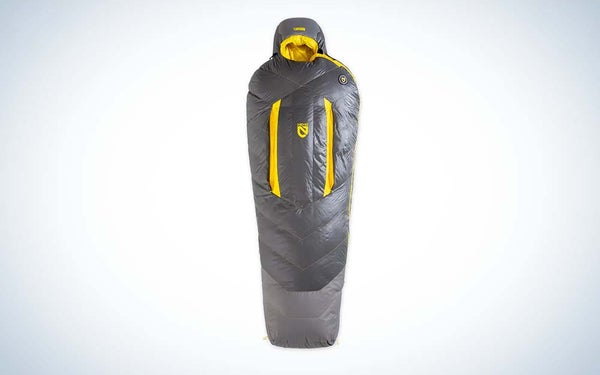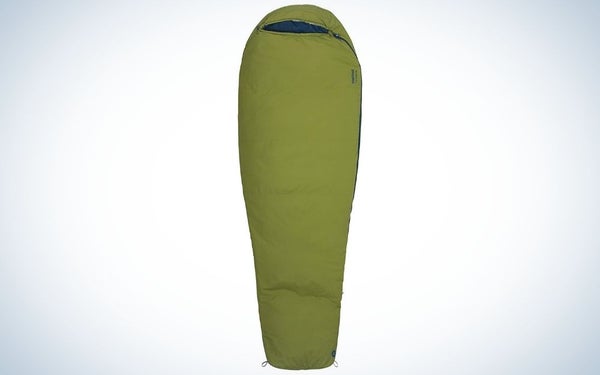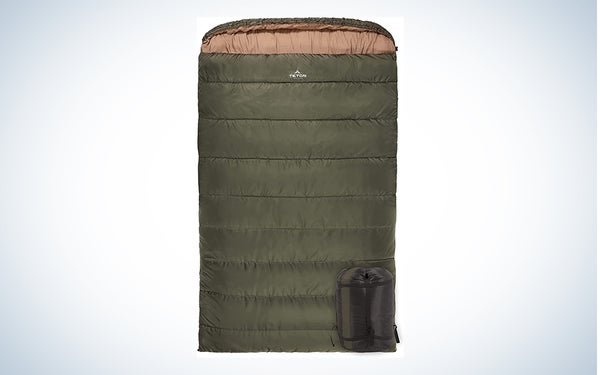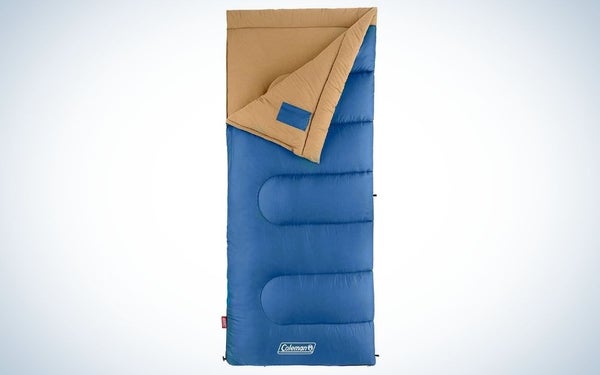

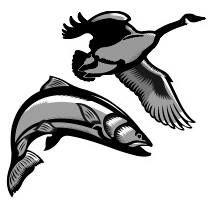

We may earn revenue from the products available on this page and participate in affiliate programs. Learn more ›
You’ve nailed down your camping trip and your crew, your meals, and your itinerary. But planning for your sleep setup is a priority one, because if you can’t get a good night’s sleep, you won’t have a good daytime experience. Sure, it can seem like whatever will do — it’s just a couple of nights, right? — but having a sleepless night in the outdoors can ruin a trip. So your choice of the best sleeping bags is a crucial decision.
The best sleeping bags depend on the season you’ll be using them, but that’s not to say you need to invest in more than one. It does, however, mean that it’s not a one-size-fits-all situation. There are contextual questions you need to ask — about climate, mode of transportation, size, preference, and of course, budget — but before you dive into those, it pays to understand some principles, measures, and materials that cover all bags.
And a word to the wise: Don’t bundle up inside your bag; clothing actually interferes with insulation doing its job. It’s the “help me help you” of letting the best sleeping bags perform like it.
Key Features
Pros
Cons
If you’re looking for one sleeping bag to carry you through most climates and circumstances, the Marmot Trestles series won’t let you down. No bag is waterproof, but this one’s fill is designed for better performance in damp conditions. It is rated to function down to 30°F, but keep in mind that temperature is the rating to keep you alive, not necessarily the one that will keep you comfortable. Pair this bag with one of the best sleeping bag liners, and you’ll have an excellent setup to get you through the summer and shoulder seasons of camping.
Key Features
Pros
Cons
Also available with a -20°F temperature rating, the Nemo Sonic Mummy Bag is our top pick for the best cold-weather sleeping bag. It provides the necessary warmth in a durable and long-lasting package, all while using responsible materials. Even though it is rated for such cold temperatures, it is still highly packable and comes with a compression sack and a mesh storage bag.
The bag is comfortable to sleep in, even with the mummy design. If you are a side sleeper, the bag has enough space to allow for tossing and turning in the night without compromising heat retention. Pair this bag with Tensor Alpine Ultralight Sleeping Pad for an even better cold-weather camping experience.
Key Features
Pros
Cons
The summer sleeping bag conundrum is how to get comfort without overheating. The solution: This Marmot mummy sleeping bag is rated at 55 degrees and has a full-length zipper so that it can be used as an open blanket or just for extra ventilation. It’s available in two sizes, but those sizes don’t accommodate larger individuals all that well. The bag packs down nice and small, making this an excellent backpacking or bikepacking option for hot climates or summertime adventures. While the materials seem of decent quality and should hold up with use, the zippers are likely the first thing that will break. Zippers can easily be replaced, and with careful use and some zipper maintenance, you can get a longer life out of the entire bag.
Key Features
Pros
Cons
The TETON Sports two-person sleeping bag is available in two temperature ratings and several color options. The bag is rather heavy (16.5 lbs), so it is a comfy, cozy option for car camping or even in an RV/camper van but not suitable for backpacking. It is a double-wide rectangle-shaped bag, but it has a mummy hood and a draft collar to keep you warm on colder nights. It also unzips completely, creating a large blanket the size of two standard-size comforters. If you can get past the weight of this bag, it is a durable two-person option.
Key Features
Pros
Cons
This 30-degree Marmot is designed to withstand damp conditions (note: no bag is waterproof). It’s cut to fit those under five feet tall but still plenty long to fit taller kids or to use as your kids grow. It uses the same Marmot Trestles design, meaning it has the same features and quality. It is just sized down to fit children. Since it is designed for kids, it is ideal that the fill and outer materials are made from synthetics as they are easier to maintain and keep clean. Plus, they continue to insulate when wet.
Key Features
Pros
Cons
This affordable dog sleeping bag comes in three sizes, has a waterproof base, and rolls up for transport in an included bag. This bag won out in terms of value and functionality, but if you are looking for a more durable product, you’ll want to upgrade to the Ruffwear Highlands Dog Sleeping Bag. This bag still gets the job done, and most dogs enjoy it. It is plenty warm for summer and mild weather camping, but with a 40°F, the seasons of use are somewhat limited.
Key Features
Pros
Cons
While we could likely rank any of Nemo’s down sleeping bags in this category, we settled on the Nemo Riff. It has 800-fill power down insulation, which means this thing can bring the heat (and will be ultra-plush), but a proprietary venting system dubbed “Thermo Gill” technology means you will not overheat. It comes in long and regular sizes and at 15- and 30-degree ratings. One stand out against other mummy bags that Nemo has perfected (in our opinion) is that many of their designs, including this one, are comfortable for side sleepers. You won’t feel claustrophobic in these bags, but they’ll still keep you warm and cozy when used in the proper conditions.
Key Features
Pros
Cons
A remarkable price for a down sleeping bag from a great sleeping bag brand, this one is designed to keep you comfortable down to 30 degrees. The down, at a 650 down fill power, has been treated to improve water resistance, and design choices like ground-level side seams boost the performance, too. Need one for colder temps? Go for the Marmot Ironwood 20.
Key Features
Pros
Cons
This is a classic, trusty sleeping bag with a 20-degree warmth rating. It doesn’t have a mummy shape or a hood for warmth and comfort, but it does have a soft lining—and a price that’s roughly 15% of some leading sleeping bags. If you are just starting out and are primarily car camping, or you want a sleeping bag to keep around for your kid’s backyard campouts, this is an excellent option. It also works well as a backup comforter as it can unzip fully to be a blanket.
Climate is consideration number one in finding the best sleeping bags for your camping trip. If you’re only a summer camper — and you are also not in the mountains or another location where it still gets chilly in the evening — a three-season or warmer bag will treat you fine. And while waterproof sleeping bags are not a thing, look for a fill and outer material that are treated to perform well in wet conditions. (Also do not skimp on a tarp and camp mattress to keep you off the ground and away from the water.)
If you’re shopping for the crew, you have several decisions to make. You may need a two-person sleeping bag for you and a partner, kids’ sleeping bags for younger campers, and even a dog sleeping bag, because, let’s face it, they’re family members — and they have much more domesticated needs than their wolf progenitors.
Down sleeping bags tend to be more expensive, particularly those made with goose down (the price mostly has to do with the availability and processing of the feathers). A down sleeping bag is significantly lighter than a synthetic bag of the same warmth rating. This means the best backpacking sleeping bag, or best compact sleeping bag, is going to be a down sleeping bag.
However, in wet conditions, synthetic bags outperform down, so if you know you’ll consistently be contending with water (rain, humidity, dew, etc.) and if the weight does not outweigh price as a factor in your decision, a synthetic bag is likely the way to go. Many leading down sleeping bags are now treated to help the materials perform better when damp, although they still generally don’t match synthetic on that measure.
“Roughing it” is a relative term, and there’s a huge middle ground between backpacking and “glamping.” An air mattress makes things extra comfortable in this category — especially if you’re not in your 20s anymore. New mattress-ready sleeping bags make the whole thing a delight.
Sometimes you’re just going on a weekend jaunt with friends in stable weather and would rather save your cash for something else. If your expectations are manageable — and if you don’t mind if your bag is heavy and bulky, as that’s a major trade-off with price — there are some very good budget sleeping bags out there.
Q: Which sleeping bag brand is the best?
Generally speaking, Nemo Equipment, Marmot, and Big Agnes are the best sleeping bag brands. They can be pricey, but the quality — both in terms of performance and durability — is exceptional.
Q: Is a down sleeping bag worth it?
Down sleeping bags are worth it for their lighter weight than synthetics for equivalent warmth. However, if the price is a driving factor in your choice, and weight is not as essential (e.g., you’re driving to your campsite instead of backpacking there), a synthetic sleeping bag is a fine option.
Q: What is the best cold weather sleeping bag?
The best cold-weather sleeping bag on our list is the Nemo Sonic Down Mummy Bag, but a runner-up is the Big Agnes Echo Park 40 FireLine Max, which is rated for temperatures as low as 20 degrees below zero.
The best sleeping bags must be suited to your camping climate and how much of a factor water will be — not just with rain, but with humidity and dew. Pay attention to the warmth rating but also consider your particulars, like how your body temperature runs while sleeping, as well as wind, shelter, and other environmental factors that will affect the insulation’s performance. Also, make sure to choose the best sleeping bags that will accommodate your sleeping position.


